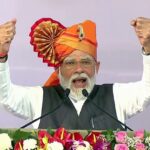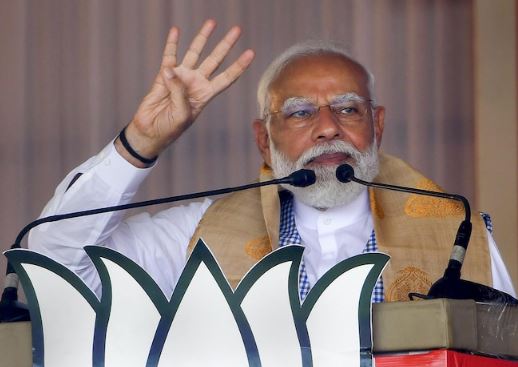Bijayananda Patnaik is commonly known as Biju Patnaik. He was a heroic personality and he achieved his name and fame through hard work alone. Apart from being a politician, he was an aeronautical engineer, navigator, industrialist, an ace pilot, popular freedom fighter and above all a renowned and outstanding personality. His looked up to Napoleon and thus he followed in his footprints. Biju Patnaik was proficient in inspiring and gaining the confidence of his people. He communicated effectively with the public and had the ability to convey his ideas to them. According to Biju, there are four important things and these are unity of nation, secularism, democracy and imperialism. He, with a strong determination and sacrifice became a great politician and a social activist. He actively participated in the struggle for freedom and thus became the ideal personality for the people of Odisha to look up to. He uttered these lines for the public of Odisha, “In my dream of the 21st century for the State, I would have young men and women who put the interest of the State before them. They will have pride in themselves, confidence in themselves. They will not be at anybody`s mercy, except their own selves. By their brains, intelligence and capacity, they will recapture the history of Kalinga.”
Early Life :
Biju Patnaik was born on 5th March, 1916 in Cuttack, Odisha. He was the son of the late Shri Laksminarayan Patnaik and the late Smt. Ashalata Devi. His father was a notable nationalist and a leading member of the Oriya movement. He had two brothers and one sister. He completed his early education at the Mission Primary School and Mission Christ Collegiate of Cuttack. In 1927, he got into to the Ravenshaw University, where Netaji Subash Chandra Bose once studied. From his college days, he was a talented sportsman and headed the football, hockey, athletics and cricket team of the University. He was the sports champion for continuously three years. He discontinued his studies to take up training as a pilot at the Aeronautic Training Institute of India and the Delhi Flying Club. As a kid, he always was interested in flying. Thus,he became an eminent pilot and anavigator. Biju Patnaik joined the Indian National Airways and became a ace pilot. During 1940-42, when the struggle for independence was going on, he was the chief of the Air Transport Command. Patnaik now has two sons and a daughter. His elder son Prem is an industrialist and the younger son, Naveen is a famous politician and is also the Chief Minister of Odisha. His daughter, Gita Mehta is a wellknown novelist and writes on the westernization of India. Biju Patnaik had an inborn love for his native state Odisha and inherited the qualities of heroism and bravery from his parents.
Career :
Biju Patnaik was inspired by Mahatma Gandhi, who fought for freedom. He took part in the Quit India Movement and was sent to jail in 1943 for two years since he was found guilty of taking freedom fighters to secret places in his plane. When the Second World War started he joined the Royal Indian Air Force where he gelled with the British and became friends with them. In 1941, when Japan stepped into the war and attacked Myanmar, he rescued the British. He played a very important role in the freedom movement of Indonesia. He, under the guidance of Pandit Jawaharlal Nehru, rescued the Indonesian people from the clutches of the Dutch rulers. On 23rd March, 1947 Pandit Nehru invited 22 Asian countries for the First Inter-Asia Conference and for this, Sultan Sjahrir, the Prime Minister of Inodnesia, was cordially invited too. Pandit Nehru trusted Biju Patnaik asked him to ensure the safe arrival of Prime Minister Sultan Sjahrir, which is exactly what Biju did. After this, he became a heroic personality amongst the Indonesians who actively participated in the gaining of the independence of their own country. In 1946, Biju was elected to the Odisha.
Assembly from the North Cuttack Constituency. From 1961 to 1963, he worked as the Chief Minister of Odisha. He was also the member of the Lok Sabha as well as a member of the Rajya Sabha. In 1975, when there was an Emergency in the country, he was the first to be prisoned with other political leaders of the opposition. In 1977, he was released and elected to the Lok Sabha from Kendra Para and till 1979 under the government of Morarji Desai and Choudhary Charan Singh he was the Union Minister for Steel and Mines. In 1980, Biju was elected to the Lok Sabha and then again in 1996 he was re-elected to the Lok Sabha. In 1989, after the defeat of the Congress Party, he came into the limelight as a political leader but when V.P Singh became the Prime Minister he went back to Odisha and contested in the assembly election. In the 1990 state assembly election, Janta Dal won and Biju Patnaik again served as the Chief Minister of Odisha till 1995.
Awards and Accolades:
He was honored by the Indonesian government with the highest civilian honor ‘Bhumi Putra’. This recognition came to him owing to his bravery and heroic feats. In 1996, when Indonesia was celebrating its 50th ndependence Day, Biju Patnaik was awarded the highest national award, the ‘Bintang Jasu Utama’.
Contribution:
In 1952, he established the Kalinga Foundation Trust to encourage scientists fromall around the world. He initiated the Kalinga Prize, which the UNESCO has been awarding for excellence in the field of science. Beside this, he also spent a huge amount to build the Paradeep Port.
Death :
Biju Patnaik died on 17th April 1997, due to a cardiorespiratory malfunction.
Legacy :
In Odisha, there are various institutions named after Biju. One of these institutes includes the Biju Patnaik University of Technology. The airport of Bhubaneswar is also named as Biju Patnaik Airport. Biju’s son Naveen Patnaik declared 5th March, his father’s birthday, as Panchayati Raj Divas. This day is an acknowledged holiday in Odisha.
Biju Patnaik and his Tibetan Phantoms:
Up till the late 1990s, they were regularly seen at the market of Choudwar. The locals took them to be Gurkhas of the Odisha Special Armed Police, often deployed at the outer periphery of the Charbatia air base. Oldtimers remember their presence from the late sixties. Few know that these groups of tough looking young men were part of the Indian Army’s most secret guerrilla force, called the Special Frontier Force (SFF) or simply Establishment 22, often referred to in military parlance as “two-twos.”
Very little is known about their presence and activities; they functioned under the India Secret Service establishment Research and Analysis Wing (RAW).Even today, the Indian government denies the existence of this force. It was Biju Patnaik who was instrumental in the formation of Establishment 22 .In fact, it was he who had mooted the idea of a Tibetan Guerilla Force,
comprising the Khampa rebels, after the 1962 Chinese debacle. As Nehru’s close confidant and defence adviser, Biju along with the Intelligence Bureau Chief B.N.Mullick, convinced Nehru that a force be formed comprising of members drawn from among the Tibetan youth who had fled to India along with the Dalai Lama. In their book “The CIA’s Secret War in Tibet”, Kenneth Conboy and James Morrison have detailed Biju Patnaik’s role in the formation of the force. It was under Biju’s stewardship that Indian intelligence had established close relations with the Central Intelligence Agency for support of the Tibetan resistance movement. In fact, India had allowed the CIA to set up camps and train the Tibetan Guerillas.Biju Patnaik had also visited the USA twice as Nehru’s representative. Establishment 22 was formed on November 14, 1962, Nehru’s birthday.It was also the day the war with China resumed on the eastern front, after a brief lull. The first guerillas were chosen from the CIA-run Mustang camp in Nepal that housed members of the Chu Shi Gandruk, the main organization of the Khampa rebels.Biju Patnaik met the Dalai Lama, as Nehru’s emissary, and convinced him to give his tacit support. The Dalai Lama sent his elder brother Gyalo Thondup for negotiations with the Khampas in the Mustang Camp. Gyalo convinced them that a regiment of 12,000 men was being raised to fight the Chinese Army in Tibet. The irony of their existence since then is that over the sixty years of the SFF, they have fought in several theatres of war, but never for their lost motherland. The primary function of Establishment-22 was to conduct covert operations behind the Chinese lines in the event of another Indo- China war. They would infiltrate as guerillas and destroy Chinese lines and communication; damage roads, airfields and radar installations; compel the Chinese to deploy a disproportionate force at rear security; create insurgency and rebellion in Tibetwhich would help the Indian army in engaging the Chinese at the border. As such, the recruits were trained as highaltitude paratroopscommandos, well versed in the arts of ambush, demolition, survival and sabotage. The first Camp was set up in Chakrata, 100 kms from Dehradun. The Camp still exists and is the headquarters of the SFF. The recruits were given six months of intensive training in rock climbing and guerrilla warfare. Biju Patnaik was quick to set up another training camp at the Charbatia Air Base and allotted 2500 acres of land at Chandragiri for a Tibetan Refugee Settlement. Many later recruits to the SFF were from Chandragiri. The story of these toughest and most secretive Special Forces units in the world has never been told. It’s so classified that even the Indian Army does not know what it is up to at any point of time. Establishment 22 reports directly to the Prime Minister via the Directorate General of Security in the Cabinet Secretariat. In 1966, the size of Establishment-22 was doubled and with this the unit was given a new name – Special Frontier Force. By 1971, SFF was 8 battalions strong; one battalion was posted in Charbatia. Even though not acknowledged by the Indian establishment, the SFF has, on many occasions, fought for the cause of their host country. The Force articipated with exemplary skill in Operation Eagle (securing the Chittagong hills in the 1971 war), Operation Bluestar (clearing the Golden Temple in 1984), Operation Meghdoot securing the Siachen glacier in1984) and Operation Vijay (at Kargil in 1999). Besides they have also been deployed in VIP security after Indira Gandhi’s assassination. In 1971, Indira Gandhi’s sent a telegram to the Tibetan fighters in which she wrote,’We cannot compel you to fight a war for us, but General AAK Niazi (the commander in East Pakistan) is treating the people of East Pakistan very badlythe same way the Chinese are treating the Tibetans in Tibet. We’d appreciate your help to liberate the people of Bangladesh.” The Tibetan commanders of Establishment 22 had a short discussion, and then unanimously agreed to fight. In the 3rd week of October 1971, more than 3,000 SFF commandos were dropped in the Chittagong Hill Tracts area bordering Mizoram. The Tibetans crossed the river on canoes and launched many hit-and-run strikes deep inside East Pakistan. They blew up the Kaptai Dam, destroyed Pakistani military positions and killed many Pakistani soldiers. They struck fear into the Pakistani army, cutting off the 97th Independent Brigade and the 2nd SSG (Commando) battalion which were entrenched in Chittagong. The ‘Phantoms’ successfully pinned the Pakistanis down and cut off all escape routes. In fact, the Pakistani soldiers were seeing ghosts all the time- ghosts who were always on the prowl, swoop down from nowhere, and mercilessly eliminate them. When the Pakistani Army surrendered on
December 16, the SFF commandos were only 40 km from Chittagong. For the first and only time in their history, the Phantoms came out in the open on Chittagong Road to celebrate. The locals were stunned by their sudden appearance. Even the Indian soldiers were surprised. The Phantoms were soon ordered back into the shadows, and there they have remained. In that operation, the SFF lost 49 lives and 190 were injured. For their pivotal role in the war, 580 SFF troops were awarded cash prizes by the Indian government. However, these recognitions were given secretly, and none of the SFF Jawans received medals of high honor. After the 1971 war, the SFF received a new name as Indira Gandhi’s ‘own force’. She used the Force in the controversial assault on the Golden Temple during Operation Bluestar. On 6 June 1984, the SFF commandos were ordered to isolate Akal Takth and secure its western flank. Due to lack of intelligence, SFF suffered heavy casualties and the army had to call tanks to complete the operation. In 1999,
SFF jawans were sent to confront Pakistani force during Kargil’s Operation Vijay. It is rumored that the SFF was involved in the retaking of Tiger Hills, one of the key battle zone during the war. The Guerillas are supposed to be volunteers; but it is a known fact that in the 54 Tibetan Refugee Settlements in India, Bhutan and Nepal, Tibetan children who drop out of school or do not make a certain grade are expected to join the SFF. The total number of soldiers, though, has changed. It was 20,000 in the 1970’s but whittled down to below 10,000 in recent years. When in 2012, the SFFquietly celebrated its golden jubilee, nobody remembered Biju Babu. For all their hardship and valour, the SFF men and women have not got official recognition. Most of them sell sweaters and run restaurants after they are demobbed, but they keep their oath of secrecy and never speak of their old days. I met a few of them in the Manju-ka-tila settlement at Delhi and at Dharamshala; they refused to speak. The few who stay in Chandragiri, talked of the1971 operations on condition of anonymity. The shadow phantoms, who initially joined to fight for their Motherland Tibet, are now fighting someone else’s battlenot with any mercenary greed but with gratitude to their Aryabhumi”- a term that the Dalai Lama has given to India which means “Land of the noble’. Biju Babu’s secret army may still be vital for our nation’s defence.
Timeline:
1916 : Born in Cuttack
1927 : Studied at RavenshawUniversity
1940-42 : Served as Chief of the Air Transport Command
1941 : Rescued Britishers when Japan occupied
Myanmar
1943 : Sent to the jail during Quit India Movement
1946 : Elected to the Orissa Assembly
1952 : Established the Kalinga Foundation Trust
1961-63 : Became the Chief Minister of Odisha
1975 : Imprisoned
1977 : Released from jail and elected as the member
of the Lok Sabha
1977-79 : Made the Union Minister for Steel and Mines
1980 : Became a member of the Lok Sabha
1990-95 : Became the Chief Minister of Odisha
1996 : Re-elected to the Lok Sabha
1997 : Died of cardio-respiratory failure











More Stories
Modi will come with hope in 2024: PM
IPL: For Bumrah every ball wicket-taking delivery
J&K to get statehood, assembly elections not far: PM